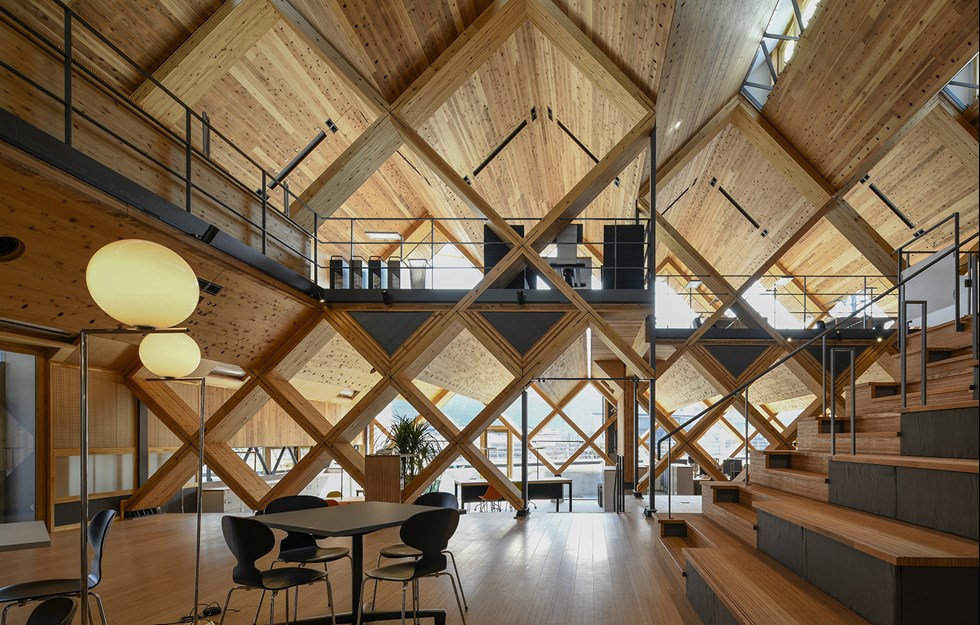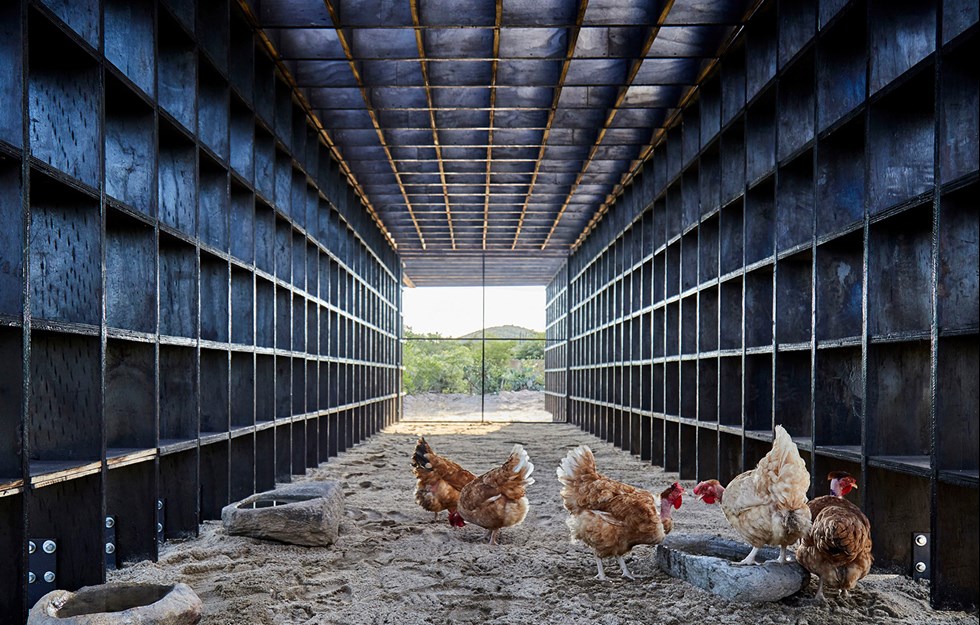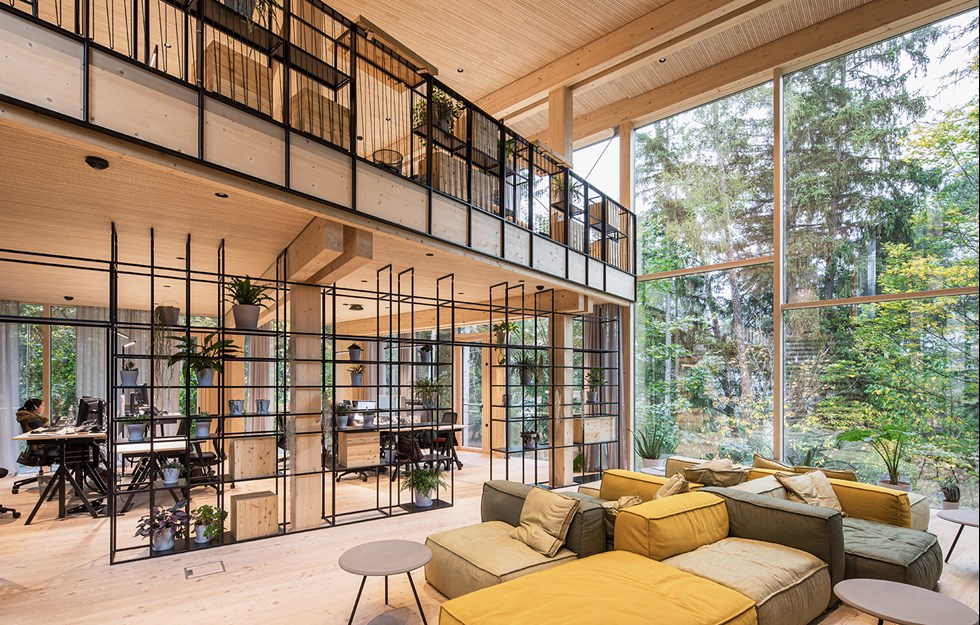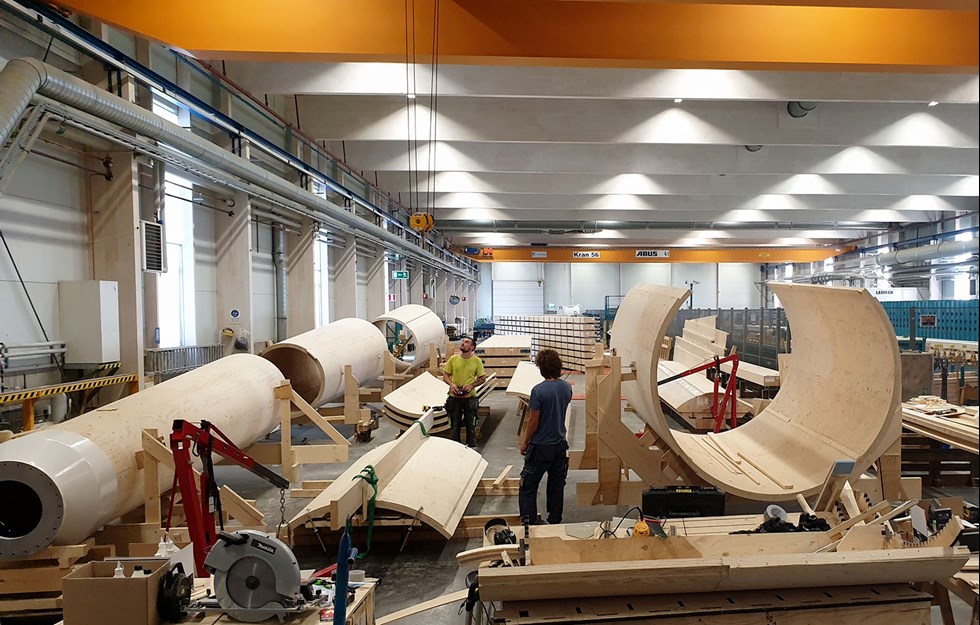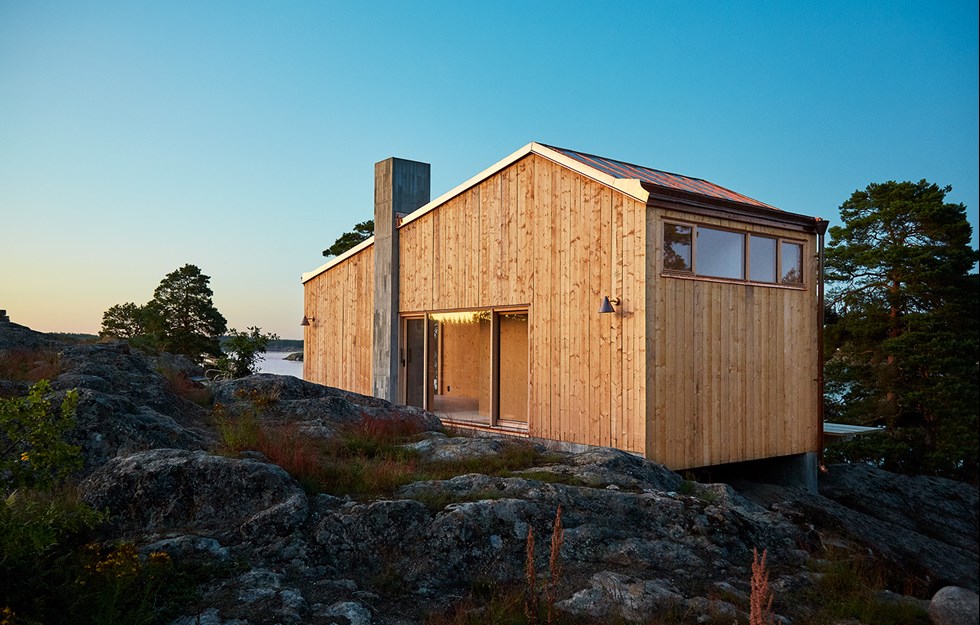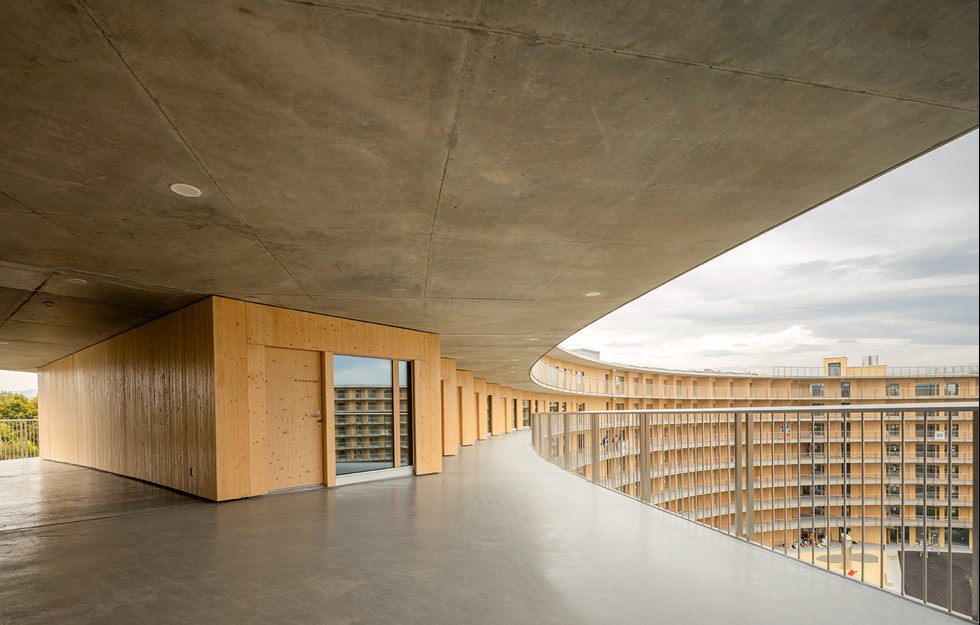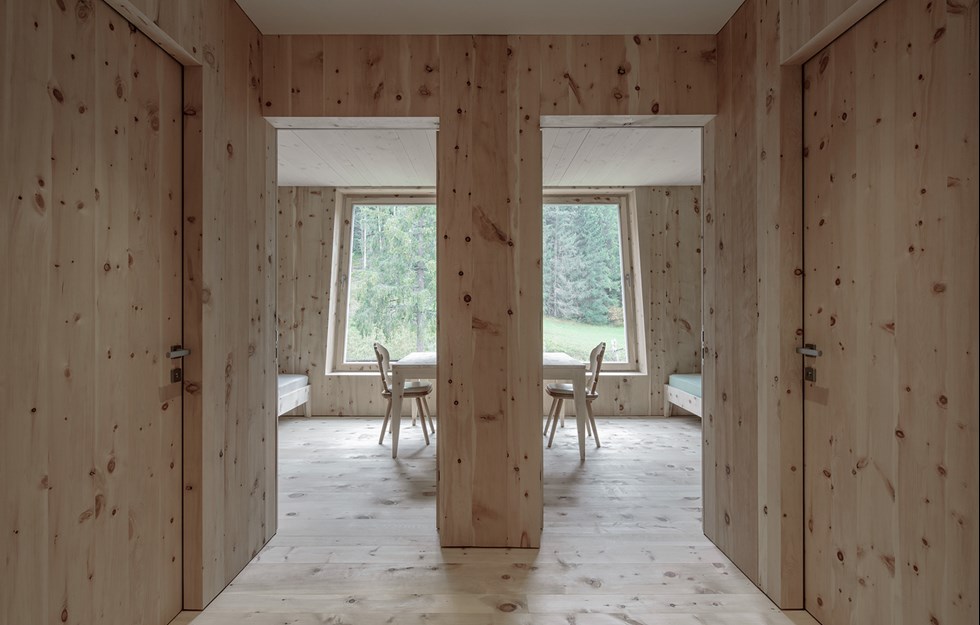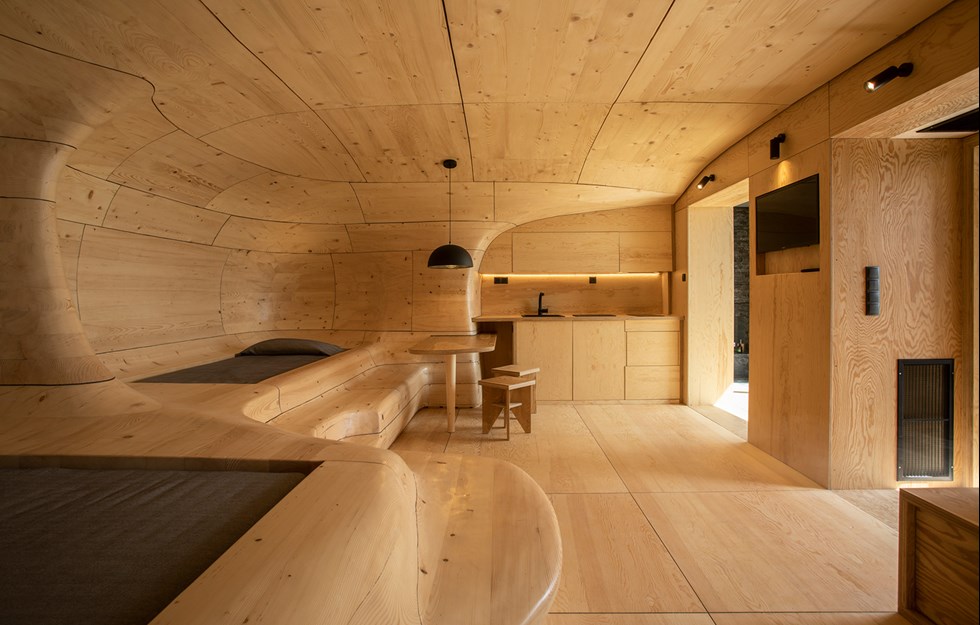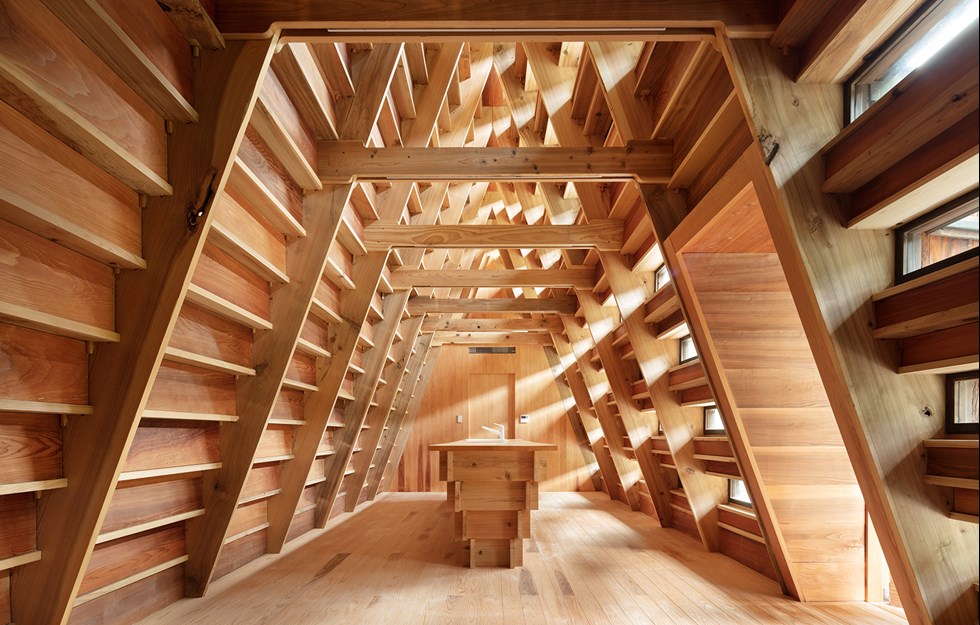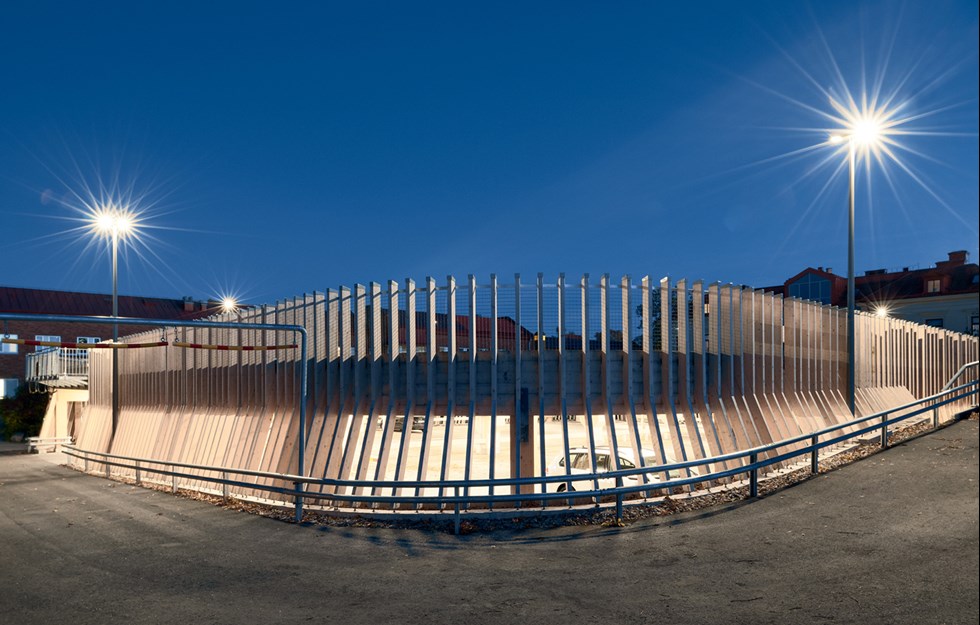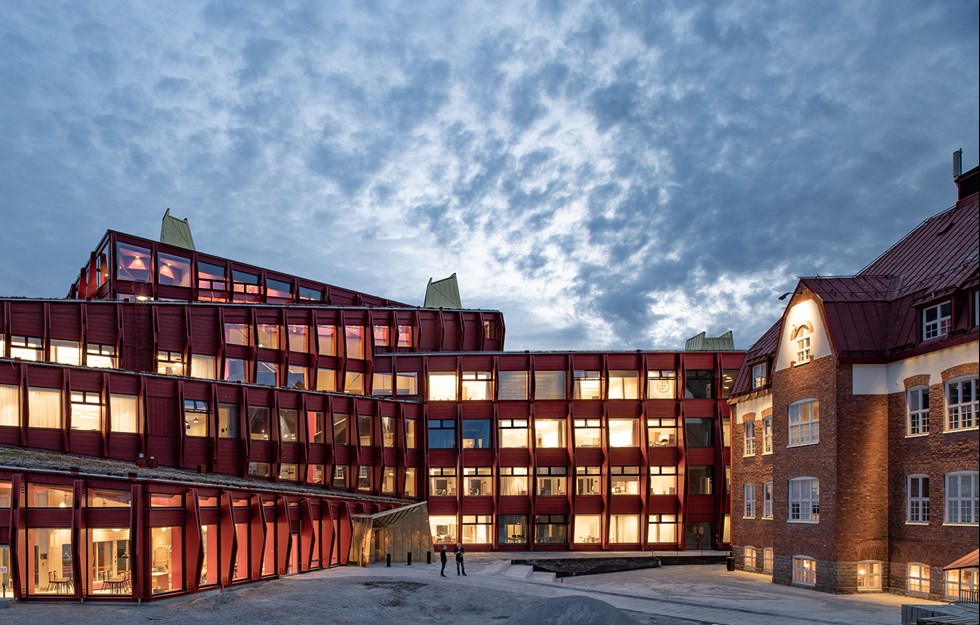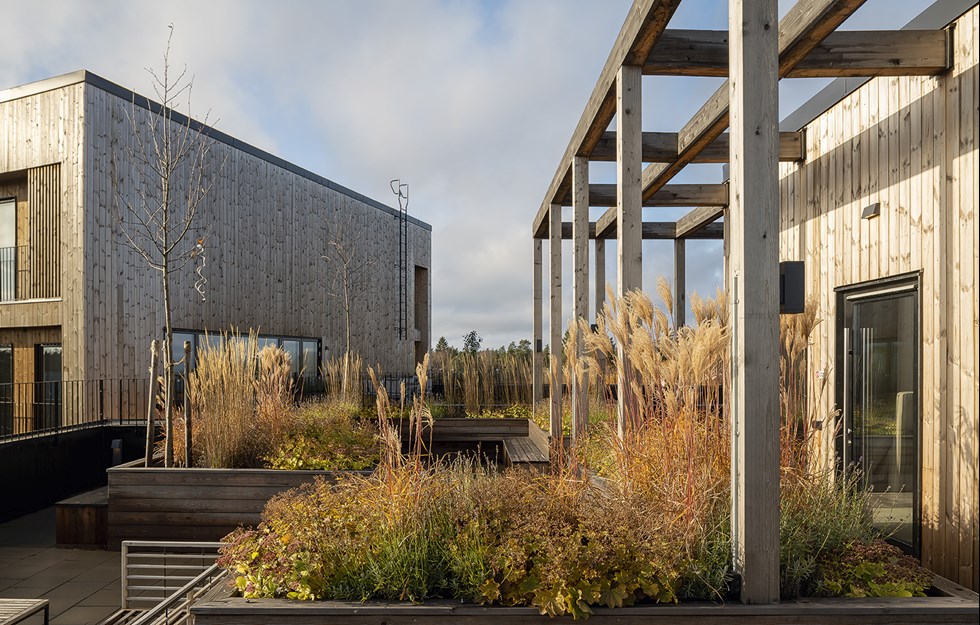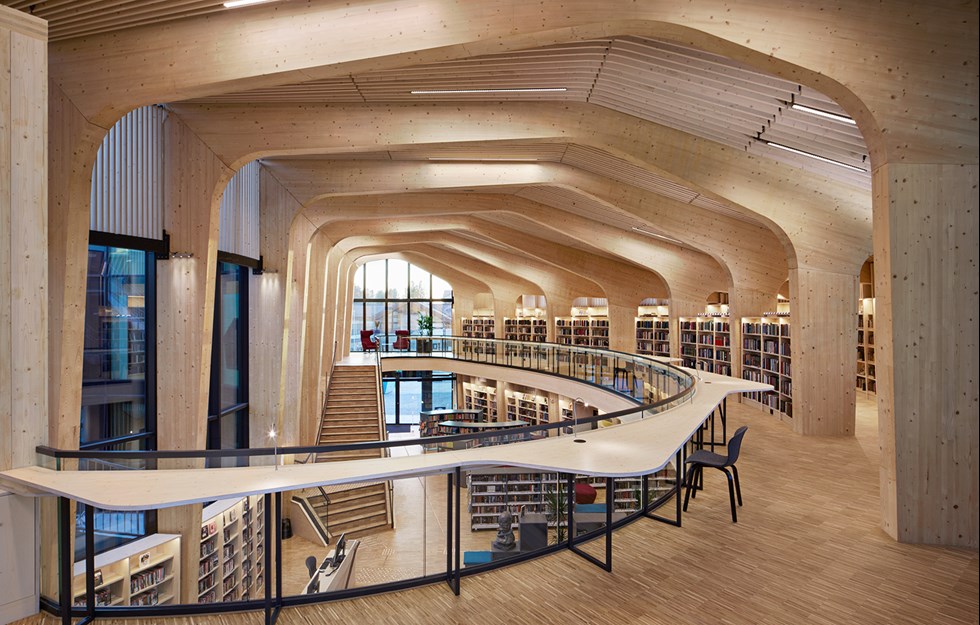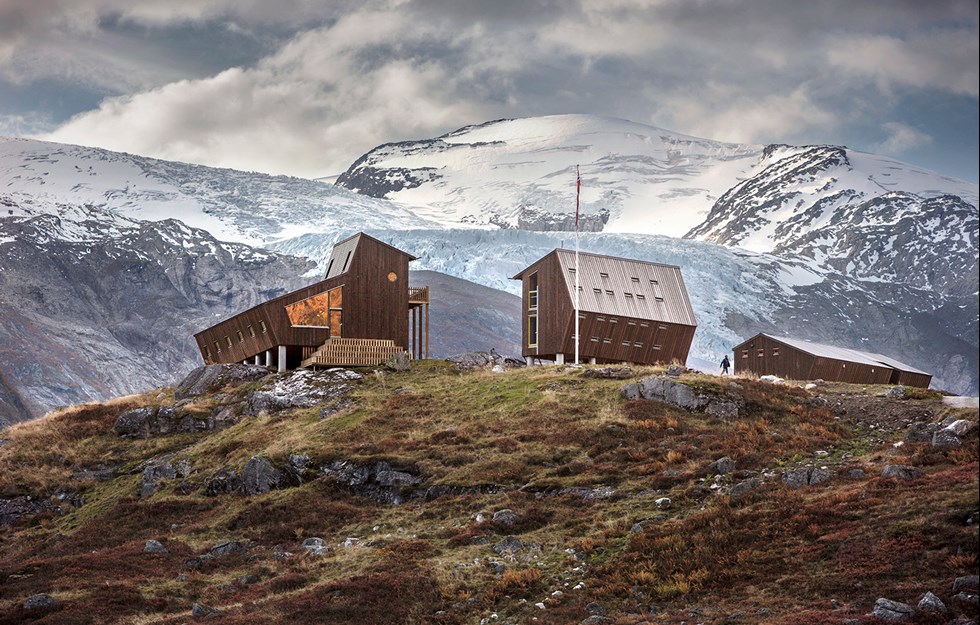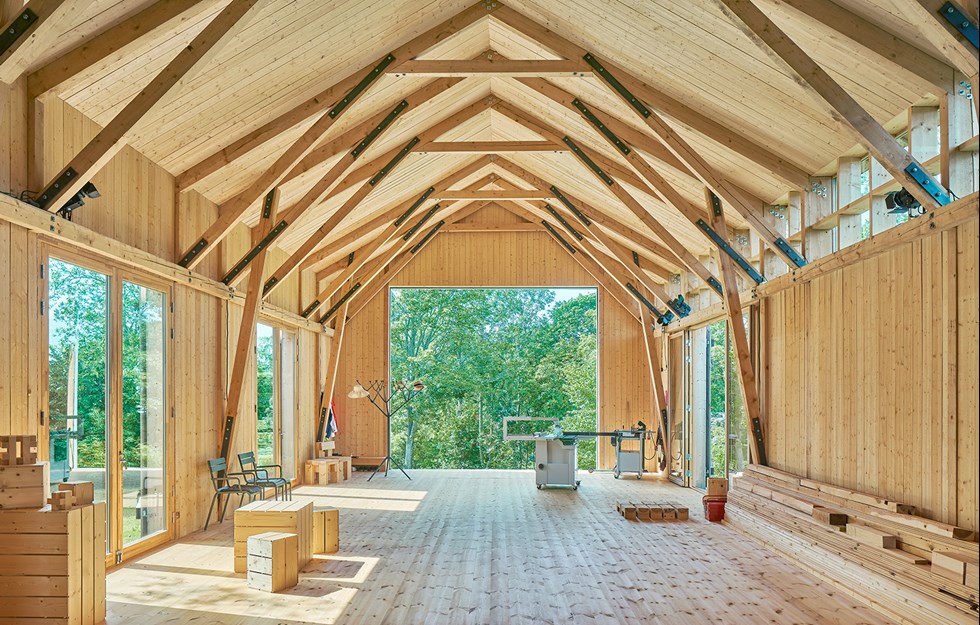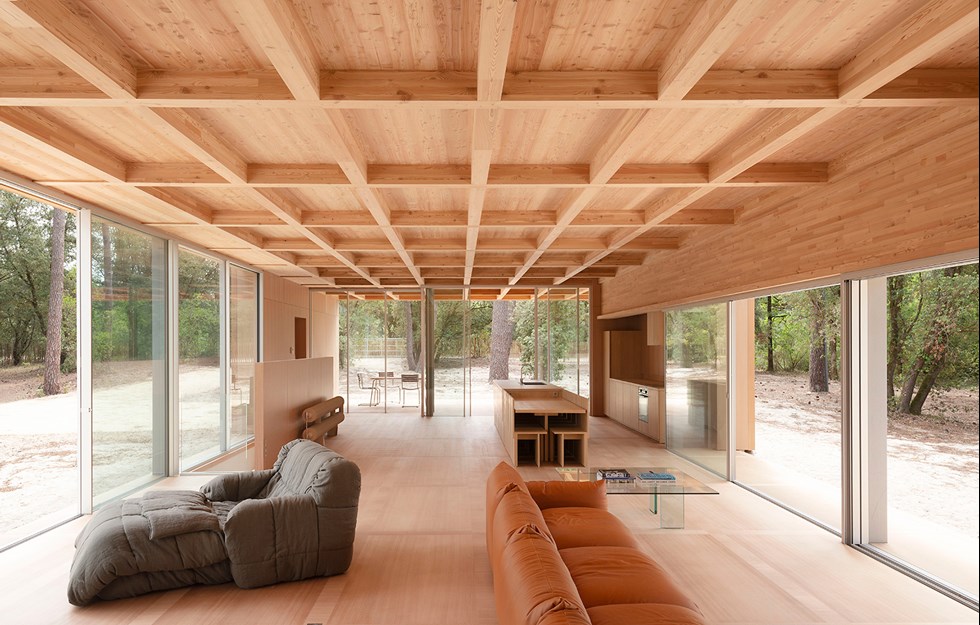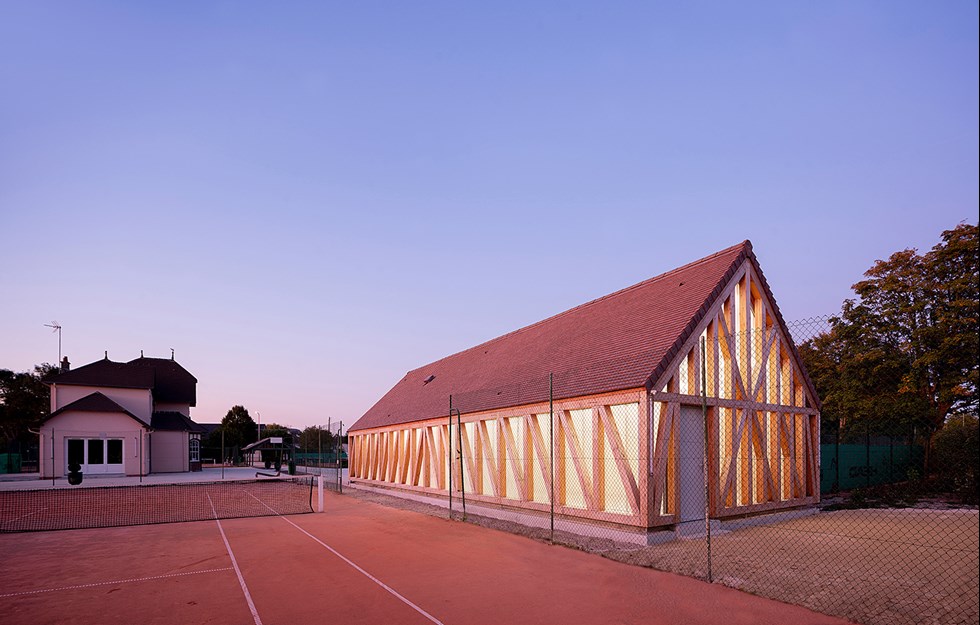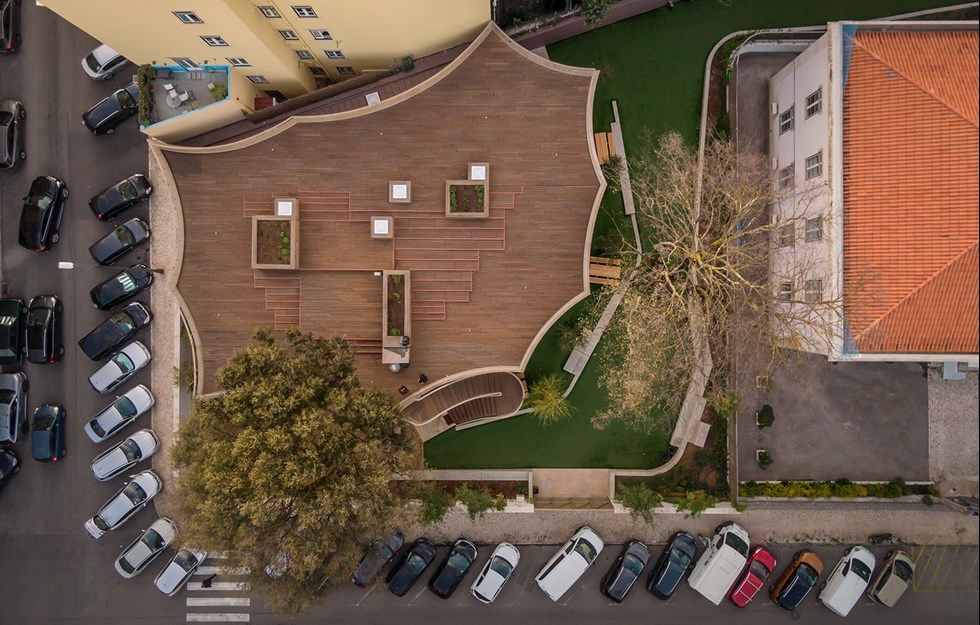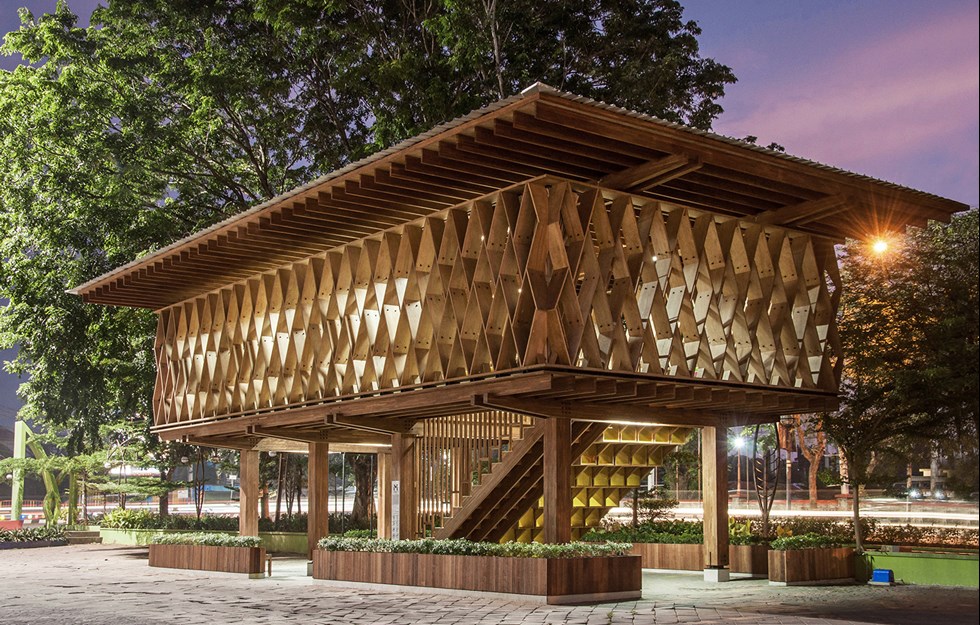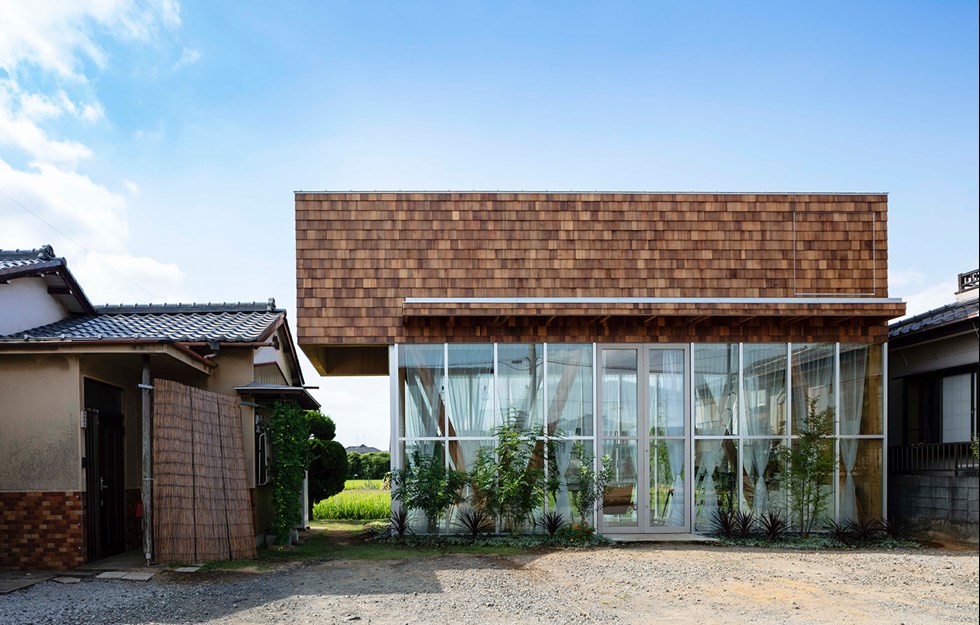WHAT IS THE most important factor for the future of wood construction? The two Austrian architects Helmut Dietrich and Herman Kaufmann answer without hesitation:
“Creating high-quality buildings through a high degree of prefabrication.”
To establish industrial construction in wood where quality and economy are the core focus on every front, all the links in the chain need to have the same ambition and drive for quality, in their view.
“We try to achieve a consensus on everything from how the timber grades link up with the forestry and what logs can be used for what part of the building, to how we make use of traditional knowledge in building wooden houses. That requires combining high-tech knowledge and new research with traditional local crafts, as championed by architects and craftspeople, and with the established industrial processes of joiners and construction companies,” says Herman Kaufmann. Helmut Dietrich continues:
“In Austria, it’s three or four percent more expensive to build in wood than in concrete. But when you factor in the reduced energy consumption and shorter construction times, it’s often cheaper in the long run.”
Clients therefore need to be clearer about the arguments in favour of a wooden structure. Dietrich, for example, feels that the energy it takes to produce the construction material should be taken into account. In Sweden, work is under way to encourage clients and the construction industry to look at the whole life cycle of the most common materials used. The aim is that, in the near future, consideration will be given to such factors as carbon emissions, energy consumption in production, emissions from transport and the ability to recycle the construction material.
Kaufmann describes how a far-reaching partnership between the client, the developer, the architect, the builder and the industry can create a shared knowledge platform, a wood building culture where practical and theoretical knowledge hold equal status. This creates fertile ground for solutions in a dialogue where everyone’s voice is heard and respected. Kaufmann and Dietrich see it as important to create standards for wood construction like those that have been developed in the concrete industry, not least to make building in wood even more cost-effective. So how do you design a production system that can be used for multiple projects while retaining the scope for quality and creating unique buildings?
“Most wooden buildings in Austria are built using project-specific details and designs, but the components are manufactured industrially,” says Herman Kaufmann.
A PERFECT EXAMPLE of how far you can go in developing high-quality industrial construction in practical terms is Hermann Kaufmann’s newly erected Illwerke Centrum in Montafon, Vorarlberg, one of the world’s largest office buildings in a wood hybrid design.
The building, which projects 120 m out into an artificial lake, has five storeys and was put up in just six and a half weeks. It is a simple and distinct building in both form and scale, reminiscent of a fine piece of furniture rather than a modern office building for a power company. The quality and attention to detail are breathtaking. The facades are untreated wood, since Kaufmann opposes all forms of fireproofing treatment. He argues that untreated wood can be recycled at the end of its life cycle and also ages beautifully.
The characteristic horizontal projections along the facades have practical benefits such as making window cleaning easier, protecting against sunlight and improving fire safety. However, the design is primarily an architectural choice. Instead of using local spruce, as Kaufmann normally would, more exclusive oak has been used for the windows, panelling and flooring. The oak comes from Austria and from southern Germany. The business conducted in the building takes place in an open-plan office layout, something that remains uncommon in Austria, but was chosen consciously here to create a light and modern workplace.
The construction system was developed by Kaufmann in partnership with concrete company the Rhomberg Group and its subsidiary Cree. The Rhomberg Group predicts major changes in the concrete industry as knowledge about the benefits of renewable construction materials grows. It sees the hybrid system as an opportunity to broaden its horizons.
THE INNOVATIVE CONSTRUCTION system used for the floor structure is based on a combination of spruce and concrete. Large parts of the installations are already built into the ceilings at the factory. The system requires no load-bearing partition walls, which makes for highly flexible spaces. This allows for individual layouts and myriad different uses. The structural elements are exposed, meaning that the wood can be seen, smelt and touched. Both the facade elements and the technical system panels can easily be replaced.
The glulam posts in spruce lock the hybrid floor structure in place, while the weight of the floor structure secures the posts to create a solid structural frame. The posts and beams are dimensioned to meet the 90-minute fire resistance requirement. In Austria, stairwells in buildings over four storeys high must be built in concrete. To minimise construction time, the unusually large floor and facade elements were prefabricated in a factory. Great care was taken to find a method for protecting the wood during assembly. The large floor elements were installed first, and then the facade elements and centre posts were fitted in a single day. Then came the next floor layer, so each level could be made watertight quickly, floor by floor. The construction system proved extremely precise. A test conducted immediately after installation showed that the structure was completely airtight, making it suitable as a passive building.
Austria has a vibrant culture of traditional woodcraft in both the forest industry and the wood construction industry, which is being keenly preserved and developed. There is a widespread belief in wood as a material and its importance for the future. But this has not always been the case. After the Second World War, Austria stopped building in timber, as had been traditional in the region. Modern materials such as concrete, glass and steel were the preferred choice now, even in a domestic context. The traditional local wooden architecture was replaced in the 1950s and 1960s by the standardised “Swiss alpine chalet”, which was built in concrete with decorative wooden details on the gables and balconies.
“It was a response to the way houses in the alpine region were supposed to look, according to an international trend driven by the burgeoning tourist industry,” explains Helmut Dietrich.
BUT SOMETHING HAPPENED in Vorarlberg in the 1970s, as a few young architects began designing wooden houses for their friends. The houses had an updated vernacular style and the friends, who often didn’t have much money, tended to build the homes themselves with the help of local carpenters. Mayors in the region countered this movement by tightening the planning process. They called the new buildings “stables” and this sort of architecture was definitely not part of their vision. The desire was to move away from the agrarian society with its lowly status, to a high-status urban society. The simple houses sparked a great deal of anger, but the architects stuck to their convictions. Despite the opposition, they sought help from the few surviving local sawmills, joiner’s workshops and craftspeople, and together they managed to turn the tide. Once it could be shown that it was possible to build good housing at a low price, the wood building sceptics changed their tune.
The trend in favour of wood accelerated as the green wave swept through the region and local villages began expanding. Architectural competitions were organised for residential developments, schools and other public buildings. All this paved the way for a new generation of architects in the 1980s, including Hermann Kaufmann. Modern designs in wood started to achieve great success in the competitions. A culture of high-quality wooden architecture was created and began to flourish, and now the region leads the world in combining craftsmanship and industrial construction in wood.
Vorarlberg has a keen sense of quality and maintains a close partnership all along the chain from forestry and design to manufacture and construction. According to Kaufmann, there is a strong tradition of investing in architecture, people are proud of the region’s craftsmanship, which they feel represents care for the landscape and people over a longer perspective. The building culture chimes well with today’s debate on sustainability and regional use of resources – both socially, economically and culturally. Interest in prefabricated buildings with strictly standard solutions, where cost comes before design and wood quality, is cool to say the least. Such buildings are considered cheap and soulless.
For Swedish advocates of wood, it can sound like a dream. What can we do to encourage the same development in Sweden?
ANDERS ROSENKILDE, head of technical development at the wood processing and furniture industry association Trä- och möbelföretagen (TMF), believes we can learn a lot from the situation in Austria, but points out that Sweden has already come a long way. Around 90 percent of all low-rise buildings in the country are now built in wood.
“Sweden currently has a very strong position in prefabricated wood construction, particularly when it comes to low-rises, but over the past ten years or so also in the construction of high-rise buildings. This is because in 1994 a ban on building high-rises in wood was lifted and that has generated research and development in fields such as fire safety, damp, acoustics and statics. We also have a long tradition of industrially prefabricated low-rises that we can build on for the future.”
Anders Rosenkilde highlights a few development opportunities that could encourage construction of more high-quality buildings in Sweden, and create the same positive development as in Austria.
“Swedish architects and structural engineers could be better at the architectural advancement of large wooden buildings. There has been a strong focus on ensuring the designs meet all the technical requirements, but now the technology for building wooden high-rises has fallen into place. There are plenty of good examples of tall wooden buildings and architects are indicating a growing curiosity. Developers are also showing an interest, but at the same time there is a certain amount of caution, since many of them have never commissioned a large project in wood before. Every completed construction project generates positive reactions and experience among the architects, structural engineers, builders and developers,” says Anders Rosenkilde.
Susanne Rudenstam is head of the Swedish Wood Building Council. She sees a bright future for the development of prefabricated multi-storey buildings in wood. She also believes that Sweden’s commitment to drastically reduce carbon emissions by the year 2050 will provide an extra spur.
“I see a positive spiral ahead. With all of us, not least the politicians, striving to achieve the climate objectives, more and more clients will be choosing wood for their newbuild projects – municipalities and county councils in particular. The increase in orders will lead to higher demands on the wood industry, and they will become even more skilled at prefabricated high-rise buildings that are assembled on site,” says Susanne Rudenstam.
“To keep up with these developments, we need to improve our expertise on all fronts. Universities, colleges and upper secondary schools with a focus on architecture and construction must provide their students with even better knowledge of wood construction. And the wood industry needs to learn from the car industry when it comes to efficient flows, where a focus on learning leads to continuous improvement. If we can succeed in this, then the future is bright for prefabricated and large-scale construction in wood.”
Text Camilla Schlyter




